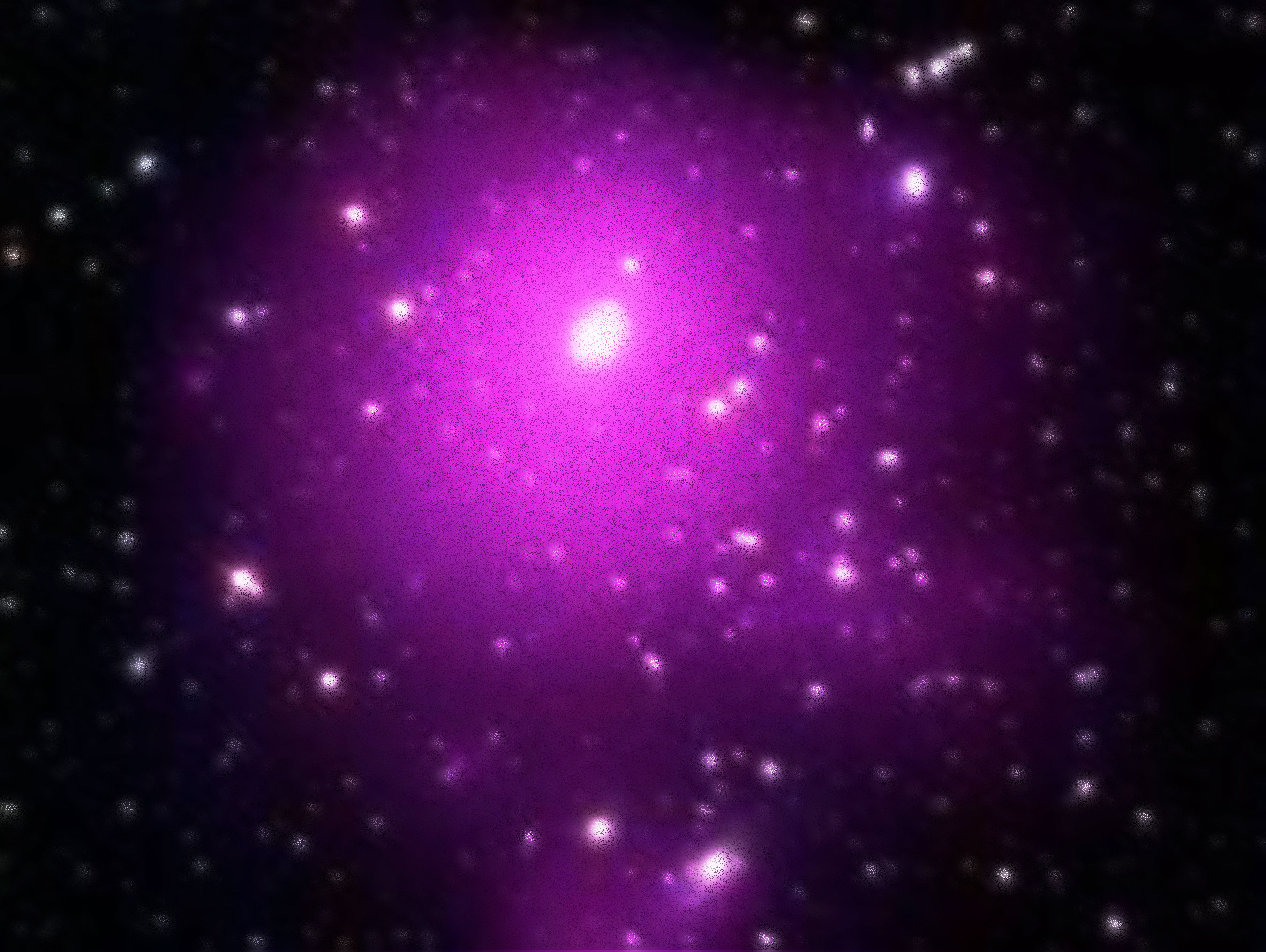Astronomers have discovered the largest black hole ever observed

The most massive black hole ever observed has been discovered in a galaxy some 700 million light-years from Earth. It is so big that astronomers think it could be imaged by the same radio telescope array that produced the first picture of a much smaller black hole earlier this year.
The galaxy in question, called Holm 15A, is the brightest member of a cluster of galaxies called Abell 85 that sit in the constellation Cetus, visible from both the Northern and Southern Hemispheres. It was discovered in 1937 by the Swedish astronomer Erik Holmberg.
Galaxies at this distance couldn’t be studied in detail until the launch of the Hubble Space Telescope in 1990 and the more recent construction of giant telescopes on the ground. Astronomers quickly realized that Holm 15A is somewhat unusual.
“What is striking about Holm 15A is how large and how faint the central diffuse region of the galaxy is,” say Kianusch Mehrgan at the Max Planck Institute for Extraterrestrial Physics in Germany and a few colleagues. But while the inner core is unusually dim, the rest of the galaxy is relatively bright. How come?
Now Mehrgan and colleagues think they’ve solved the conundrum using data gathered by the Very Large Telescope, an array of four interconnected telescopes each with a diameter of 8 meters that observes the night sky in the visible and infrared parts of the spectrum. The instrument sits at an altitude of 2,600 meters in the Atacama Desert of Chile and, since its first light in 1988, has become one of the most productive astronomical observatories ever built.
Mehrgan and colleagues used this data to map out the structure of the galaxy in more detail than previously possible. They then ran a number of simulations to understand why the center is so faint and how the galaxy might have formed in the first place.
The results make for interesting reading. The simulations suggest that Holm 15A must have formed in a giant collision between two young galaxies, a common occurrence in the early universe. The team say the reason the core is so dim is that it is dominated by a supermassive black hole that has either eaten the stars nearby or ejected them into the outer regions of the galaxy.

This black hole is huge, even by cosmological standards. The team say at a conservative estimate, it is 40 billion times more massive than the sun. By comparison, the black hole at the center of the Milky Way, Sagittarius A*, is only 4 million times more massive than the sun.
“The supermassive black hole of Holm 15A is not only the most massive one to date, it is also four to nine times larger than expected,” say Mehrgan and colleagues, pointing out that it is twice as massive as the previous record holders.
This huge size makes the Holm 15A black hole a good candidate for imaging. Earlier this year, astronomers took the first picture of a black hole using an array of eight radio telescopes positioned all around the world that created a planet-size instrument. This array is known as the Event Horizon Telescope and has a resolution of 20 milliarcseconds, equivalent to the resolution required to see Neil Armstrong’s footprint on the moon from Earth.
The newly discovered black hole fills an area of the sky about 18 ± 3.7 microarcseconds, so it may well be imageable with the Event Horizon Telescope. “The supermassive black hole of Holm 15A is a candidate system for direct imaging,” say Mehrgan and colleagues.
That’s interesting work that reveals how powerful imaging techniques have become in recent years. Nevertheless, with bigger and more powerful telescopes currently under construction, Holm 15A is unlikely to hold the record for long.
Ref: arxiv.org/abs/1907.10608 : A 40-Billion Solar Mass Black Hole In The Extreme Core Of Holm 15a, The Central Galaxy Of Abell 85
Deep Dive
Space
How to safely watch and photograph the total solar eclipse
The solar eclipse this Monday, April 8, will be visible to millions. Here’s how to make the most of your experience.
How scientists are using quantum squeezing to push the limits of their sensors
Fuzziness may rule the quantum realm, but it can be manipulated to our advantage.
The race to fix space-weather forecasting before next big solar storm hits
Solar activity can knock satellites off track, raising the risk of collisions. Scientists are hoping improved atmospheric models will help.
Stay connected
Get the latest updates from
MIT Technology Review
Discover special offers, top stories, upcoming events, and more.